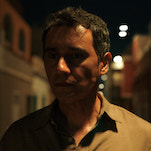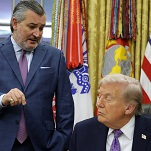The production’s obfuscation game was strong: By the time the show aired, I was shocked to learn we’d been present for the production of the episode in which one of those brothers, probation officer Ray Stussy, is accidentally killed while tussling with his brother, Emmit, over the very item that led to Emmit’s outrageous wealth. We were none the wiser that this was a story Fargo would tell in its third year. McGregor conducted interviews in Ray’s scraggly mane and prosthetic double chin, and much ado was made of the cast and crew’s affection for the character—which, in retrospect, comes across as preemptive mourning.
Such was the emphasis on the Stussy sibling rivalry and the thin amount of information available about anyone else on the show that I found myself at a bit of a loss while sitting across the table from Carrie Coon, who’d be stepping into the well-insulated boots that Allison Tolman, Colin Hanks, Patrick Wilson, and Ted Danson previously wore as the show’s representatives for law and order. So I defaulted to one of my favorite TV subjects from the past few years: The Leftovers, in which Coon made her first major foray into the medium, playing a woman whose entire family disappeared (along with 2 percent of the world’s population) in a mysterious event referred to as The Sudden Departure. Beyond the Stussy feud, press materials for Fargo’s third season revealed that the season’s snowballing caper would begin with the mistaken-identity murder of Eden Valley Police Chief Gloria Burgle’s stepfather. So I made a connection between the two characters’ losses and Coon provided a great sound bite—“I suppose I’ve become the ‘it’ girl for grief and loss, which maybe is good. At least I have some jobs”—and the conversation moved on to thematic material and ironic character names and the other things that pass for substance in a press junket interview.
But, as is ever the case on Fargo, the complete truth of the matter was still waiting to be uncovered. The overlap between Gloria and Coon’s Leftovers character, Nora Durst, doesn’t end with the grieving process. In a cosmic coincidence that’s sure to delight the creators of both series (assuming they’re not cursing one another’s parallel thinking), the season finale of Fargo and the series finale of The Leftovers drop Coon into conversations that test the limits of unreliable narration on television. At the end of The Leftovers’ “The Book Of Nora,” her character gives an extended monologue about how she crossed over to whatever afterlife realm/parallel universe/alternate dimension sucked up her loved ones on October 14, 2011. At the end of Fargo’s “Somebody To Love,” Coon listens as someone else details the circumstances of their impending disappearance. Both scenes act as the epilogues to their particular stories. Both scenes leave it up to the viewer to determine the truth. (Did Nora cross over and then return to the world she left behind? Will “a man you can’t argue with” enter the interrogation room and tell the villainous V.M. Varga he’s free to go?) Most crucially, both scenes cap television programs that pose huge questions about the nature of truth, and the certainty of uncertainty.
There are similarities, but it’s the differences that count here, in terms of how effectively the third seasons of The Leftovers and Fargo use uncertainty as a storytelling device, and the impact that brings to their conclusions. It’s what’s underpinning that sense of being kept on your toes—that feeling that you can never know conclusively if the departure machine worked for Nora or if the door opens for Varga. For The Leftovers, it’s a very human thing, a component of storytelling that’s been around for as long as humans have been telling stories: It’s a metaphor for faith, a theme that runs throughout The Leftovers, but becomes especially pronounced as the characters convince themselves that the world is about to end (again). There’s some thematic material running through Fargo’s unanswered questions, but it’s almost entirely academic—questions that exist for the sake of asking questions.
Back in Calgary, I got a knot in my stomach when the publicists informed us that season three would take a good, hard look at the disclaimer that opens Joel and Ethan Coen’s Fargo, and every episode of the FX series that it inspired: “This is a true story.” It struck me as an opportunity for Fargo to disappear up its own ass. Truth and fact are always going to come up in a crime drama, but stretch them out too much and you run the risk of invalidating the crime or the drama. Noah Hawley had already manipulated reality extensively this broadcast season in his X-Men-adjacent series Legion, a psychedelic mindfuck of a superhero story that could, at any moment, wave away the events of entire episodes. Fine for something set in an unreality of mutants, free-form-jazz-odyssey astral planes, and yellow-eyed Aubrey Plazas, but do this too frequently and you wind up setting a narrative trap like Westworld’s, where each resulting pull of the rug has less impact than the one before. It felt like more than the snow-bloodying allegory of Fargo could bear.
Call it confirmation bias, but my fears were realized by V.M. Varga (David Thewlis), the latest (and potentially final?) evolution of the Fargo philosopher-criminal. Prototyped by Billy Bob Thornton in season one and perfected by Bokeem Woodbine in season two, this Tarantino-esque figure is reduced to an aphorism-spouting shell in season three. Varga lives to invalidate that which the rest of the world takes for granted, sowing doubt with a tiresome soliloquy about the Moon landing, or scotching Gloria’s investigation into her stepfather’s death by turning what looks like several coincidentally interconnected crimes into a tidy serial-killer narrative. He’s a living representation of the logical fallacy that because anything can be true, nothing is true. And that nihilistic viewpoint garbles whatever Fargo’s third season wants to say about The Truth.
He’s a symbol, but every character on Fargo is a symbol. That’s what kept the show at arm’s length for me in seasons one and three; there’s some fascinating alchemy going on in season two that I’m going to be puzzling over for the rest of my natural life. (I think it mostly has to do with the uniformly high quality of the performances.) That second round had its own unanswered riddles and red herrings in the UFO and Hank Larsson’s “universal language,” but they were more ornamental than Vargas’ assault on the official record. And the thing is, season three actually pulled off some meaningful tricks along these lines: Just before he’s executed in the kitchen of his new home, Emmit Stussy reflects on his life’s story in photographs—none of which contain Ray. It’s a gut punch, because it has nothing to do with numbers in an offshore account or Varga finding another way to slip through the cracks. It’s Emmit erasing the existence of his brother, nullifying the relationship that was once all we knew about season three.
It’s a clever decision to have Varga and Gloria face off in the waning minutes of the finale, two symbols in a face-off of undetermined outcome. But it’s clever like the mirror behind them is clever, an optical illusion that casts their reflections into infinity and repeats a motif previously staged with Gloria and Emmit. And it just doesn’t mean as much as Nora Durst’s exchange with her ex, Kevin Garvey (Justin Theroux), at the end of The Leftovers. That finale plays its own mind games: Following a version of Nora who’s much older than the last time we saw her—and calling back to a surprising twist from the season premiere—“The Book Of Nora” is hazy about what became of the character after she was bathed in goo and blasted with potentially lethal amounts of radiation. Are her current Australian digs proof that she backed out at the last minute, or are we seeing the life she built after crossing over to the other side? If it’s the latter, where are the kids and husband with whom she intended to reunite? Kevin’s arrival nudges the perception toward “definitely crossed over,” as he speaks as if he and Nora had never dated, never moved to Jarden, Texas, never broke up in a Melbourne hotel room that went up in flames that were nowhere near as fiery as the argument that led to their split. Like Ray missing from Emmit’s mementos, the absence is felt.
And so it’s all the more devastating when Kevin drops the ruse and cops to spending years of vacation time combing Australia for Nora. And that lays the emotional groundwork for Nora’s story, a tale of arriving in a dimension where The Sudden Departure occurred in reverse, where all the people who remained in her world were the ones who disappeared. There is no feint toward corroborating either story. As in the Fargo finale, all we have to go on are the words Nora and Kevin give one another. As in the Fargo finale, it doesn’t really matter who’s telling the truth. The fact of the matter is that these two people have been through so much together, have seen such unbelievable things in their time on Earth(s), that they take one another on faith.
And The Leftovers makes the moment matter, because these aren’t two symbols speaking in abstracts. They’re people, beautifully realized by Coon and Theroux, who have experienced chaos and unpredictability firsthand—not characters expressing a writer’s competing ideas about chaos and unpredictability. It really doesn’t matter if that door behind Varga opens, and it doesn’t matter if it stays closed either. Because it’s just a door. And Varga is just an invention. And any conclusion that you draw about the final scene of the finale is just a conclusion. Fargo’s third season is a curious exercise in postmodern storytelling, which did some things that worked (the emergence of Mary Elizabeth Winstead’s Nikki Swango as an avenging hero, Coon’s essaying of “background girl” Gloria, that episode where Gloria goes to Hollywood to investigate her stepdad’s past as a sci-fi writer, and an animated robot says, “I can help!” a lot) and some things that did not (almost everything having to do with Varga with the exception of his Mobile Command Unit Action Playset—Yuri and Meemo figures sold separately). Because we have witnessed it, “It’s happening becomes as the rocks and the rivers,” as Varga says in the finale. But the questions left hanging in that final scene are shallow rivers, indeed.

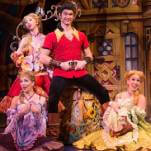
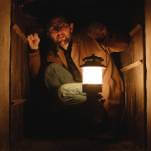





![Rob Reiner's son booked for murder amid homicide investigation [Updated]](https://img.pastemagazine.com/wp-content/avuploads/2025/12/15131025/MixCollage-15-Dec-2025-01-10-PM-9121.jpg)
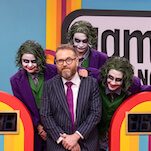
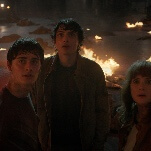
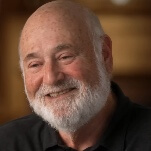



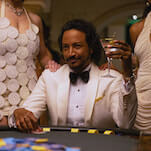

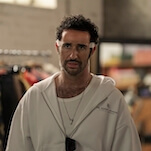
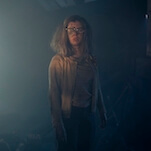
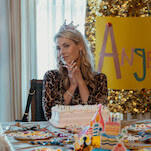

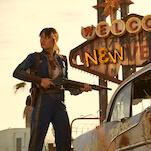
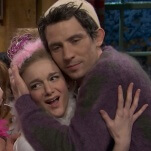

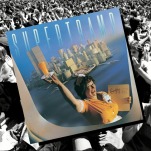




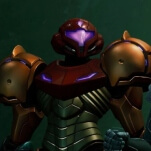
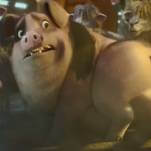
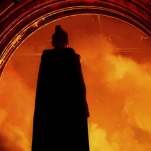


![HBO teases new Euphoria, Larry David, and much more in 2026 sizzle reel [Updated]](https://img.pastemagazine.com/wp-content/avuploads/2025/12/12100344/MixCollage-12-Dec-2025-09-56-AM-9137.jpg)



